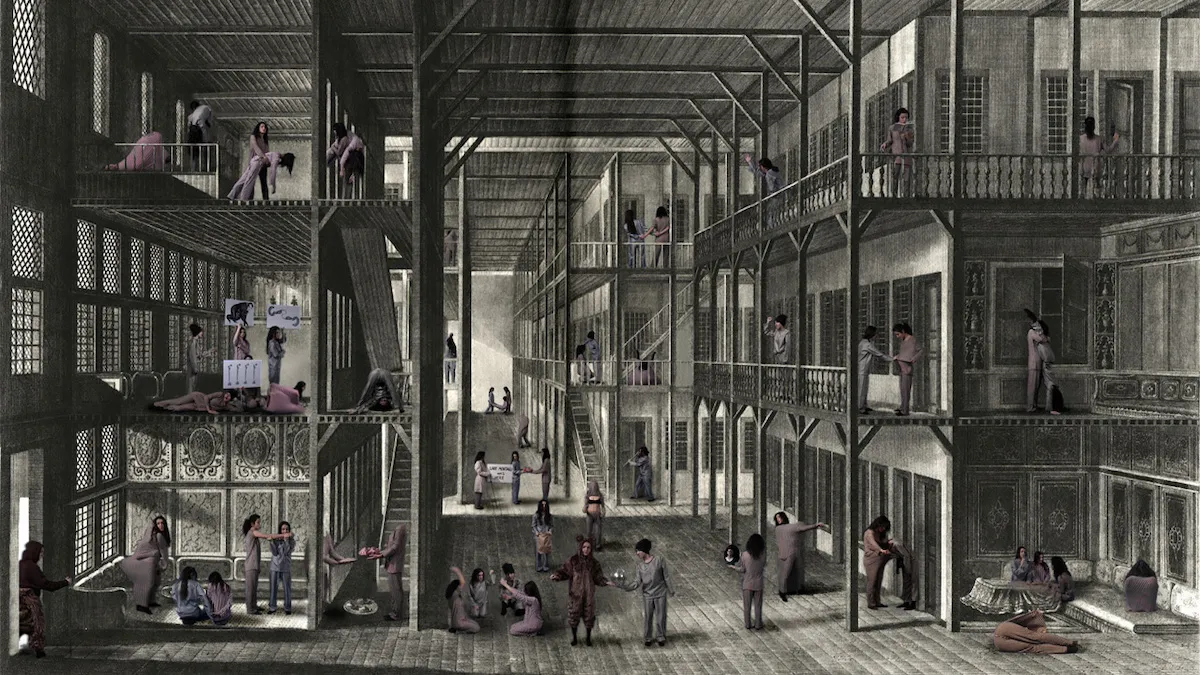
Inci Eviner, an artist whose work has appeared in biennials across the globe, from Venice to Sharjah, accused Qatar’s Mathaf: Arab Museum of Modern Art of censorship after it removed one of her videos from an exhibition at the last minute.
The video, titled Harem (2009), revisits a 19th-century engraving made by Antoine Ignace Melling, a Frenchman who visited Istanbul, the city where Eviner is based. In a text written by Eviner, she notes of Melling’s engraving, “In contrast to the Orientalist tendencies of the period, there are no dramatic or seductive expressions. Women, illustrated with almost scientific precision, look as if they are thrown out of time.” The video then brings that engraving to life, with humans edited into the engraving.
Melling’s engraving is owned by the Lusail Museum, a Qatari museum of Orientalist art that is expected to open in 2029. That institution organized Mathaf’s current survey of Jean-Léon Gérôme, a 19th-century French painter whose images of North Africa and the Middle East were acclaimed during their day and are now debated by scholars, with one appearing on the cover Edward Said’s famed book Orientalism.
The 350-work Mathaf show features contemporary responses to Gérôme’s art, including newly commissioned pieces by Babi Badalov and Nadia Kaabi-Linke.
On November 2, the day of the show’s opening, Eviner was told that Harem would no longer be included in the Gérôme show. In an email obtained by ARTnews, Zeina Arida, director of Mathaf, told Eviner, “At the request of the Ministry of Culture, the work Harem has not been included in the exhibition Seeing Is Believing: the art and influence of Gérôme.”
Eviner told ARTnews that she received a personal apology from Sara Raza, the show’s curator, and that she had not received an official reasoning for the removal of Harem.
“I feel the case of my work being removed from the exhibition, leads to the question [of] how women’s rights, as well as free speech and free expression of art, change according to local values or are universal human rights,” Eviner wrote in an email. (According to a 2021 Human Rights Watch report, Qatari face a system of “deep discrimination.”)
Harem has notably been shown at museums across the world, among them the Los Angeles County Museum of Art, MASS MOCA, the British Museum in London, and the Bonniers Konsthall in Sweden. Elsewhere, it has not generated any controversy.
A representative for Mathaf confirmed that the Eviner work had been removed but did not comment further. The Qatari Ministry of Culture did not respond to request for comment.
Eviner said that the removal of Harem calls into question Mathaf’s goals as an institution. “Mathaf Museum invites curators and artists as well as other art professionals from all over the world to legitimize how they use contemporary art,” she wrote in her email. “We have to question how contemporary art exhibitions might be useful tools to prove part of a democratic society in the art world. Is it possible to consider contemporary art without critical capacity?”


